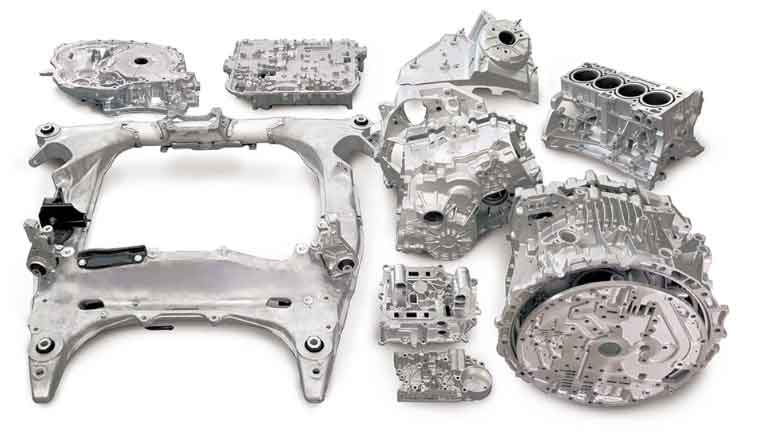
Die casting is a highly versatile and efficient metal casting process that involves injecting molten metal into a mold, known as a die, under high pressure. It is widely used in the manufacturing industry to produce complex-shaped metal components with high precision and excellent surface finish. This comprehensive overview will introduce you to the die casting process and its key components.
- Die Casting Process Overview: The die casting process involves several steps, including mold preparation, metal melting, injection, solidification, and component ejection. The key components of the process are the die casting machine, the mold or die, and the molten metal.
- Die Casting Machine: Die casting machines are specifically designed for the die casting process. They consist of two main parts: the injection unit and the clamping unit. The injection unit melts the metal and injects it into the die, while the clamping unit holds the two halves of the die together under high pressure during the casting process.
- Die or Mold: The die, also known as the mold, is a precisely machined tool made of two halves, the fixed die half and the movable die half. The die has cavities in the shape of the desired component. When the molten metal is injected into the die, it fills these cavities and takes the shape of the component.
- Molten Metal: Die casting utilizes a variety of metals, including aluminum, zinc, magnesium, and copper-based alloys. The choice of metal depends on factors such as the desired mechanical properties, surface finish, and cost requirements of the component.
- Die Casting Process Steps:a. Mold Preparation: The mold is carefully prepared by applying a release agent to prevent the molten metal from sticking to the die. The die halves are also properly aligned and clamped together.b. Metal Melting: The chosen metal is melted in a furnace at a controlled temperature. The molten metal is maintained at the desired temperature throughout the casting process.c. Injection: The molten metal is injected into the die cavity under high pressure using the injection unit of the die casting machine. The metal rapidly fills the cavity and solidifies.d. Solidification: As the molten metal cools, it solidifies and takes the shape of the die cavity. Cooling channels within the die help regulate the solidification process.e. Component Ejection: After the metal solidifies, the movable die half is opened, and the component is ejected from the die using ejector pins or other mechanisms. The die halves are then closed again to begin the next cycle.
- Advantages of Die Casting: Die casting offers numerous advantages, including:
- High production efficiency and fast cycle times
- Excellent dimensional accuracy and surface finish
- Ability to produce complex-shaped components with thin walls
- Good mechanical properties and material strength
- Cost-effectiveness for large-scale production runs
- Applications of Die Casting: Die casting finds applications in various industries, including automotive, aerospace, electronics, appliances, and many others. It is commonly used to produce components such as engine parts, housings, brackets, gears, and connectors.
Die casting is a highly efficient and precise metal casting process that allows for the production of complex components with excellent dimensional accuracy and surface finish. Its versatility and cost-effectiveness make it a popular choice for various industries.
